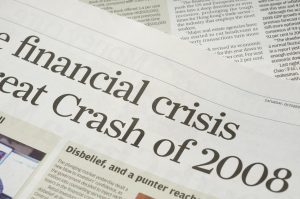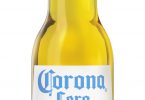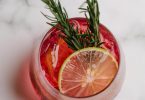Drinking in an economic downturn

The crisis of just over a decade ago sent shockwaves through the global economy, prompting major changes to consumer demand and to the shape of the beverage alcohol industry.
The crisis of just over a decade ago sent shockwaves through the global economy, prompting major changes to consumer demand and to the shape of the beverage alcohol industry. While every downturn has its own characteristics, IWSR looked at the impact of the 2008 financial crash and assessed whether similar patterns are likely to unfold in the wake of the Covid-19 pandemic.
“While the pandemic and its economic consequences may share some common aspects with the downturn of more than a decade ago such as increased at-home consumption, price stagnation and falling beer sales, there are also marked differences,” it reports, “These include not only the enforced closure of the on-trade and severe restrictions on international travel but also the fact that the BRIC markets are less likely to prop up demand this time and the likely disproportionate impact on smaller and craft producers.
“The speed and extent of any recovery – which came relatively quickly following the 2008 crash – will depend on the path of the virus, how quickly restrictions can be lifted and the impact of any future Covid-19 surges.”
The new on-premise
The closure of much of the global on-trade has had a huge impact but there will be no swift recovery as restrictions are eased. In China consumers have so far been reluctant to return to the on-premise and some re-opened bars and nightclubs have closed again as Social Distancing proved difficult to uphold.
Spain’s restriction of the on-premise re-opening to outdoor spaces and 30% capacity will likely prove difficult for many operators and sales are likely to remain limited at first, believes IWSR but the gradual re-opening of the on-premise is the step needed to give brand-owners and their distributors a path forward, it adds.
Bad for beer, better for spirits and wine
Beer and cider were hard-hit in the 2008/9 economic crisis due to a combination of an on-trade slump and increased at-home consumption which tends to favour spirits and wine.
Beer and cider sales dropped from 6% growth in 2007 to a 1% decline in 2009 according to IWSR figures. This trend is likely to continue, with ongoing Social Distancing measures also likely to curtail sports fixtures, major events and festivals – all traditionally strong drivers of beer and cider consumption.
“Meanwhile Champagne consumption, often tied to celebratory drinking occasions, will likely be hit hard, with a slow recovery to reach pre-virus levels,” states IWSR.
“Sparkling wine, which has declined steeply in the short-term, should recover as lockdown restrictions ease in markets where it is viewed as an everyday drink, but sparkling wine celebration markets will likely take longer to return to growth.”
Craft crisis and diversity reversal
The years since the 2008/9 crisis have been marked by expanding numbers of suppliers and increased diversity of products on offer, especially with the rise of craft brewing and distilling, reports the IWSR. However these businesses are typically disproportionately reliant on “cellar door” and on-premise sales, both of which have been heavily affected by the pandemic.
The last economic crisis also saw a ‘shake-out’ of small brands from retail as operators sought to maximise returns which IWSR’s Chief Executive Mark Meek believes will happen again.
“Both these factors spell a very difficult time looming for the majority of craft producers unless they have size already,” he says.
Value suppressed
In 2008 and 2009, standard-priced wines and spirits declined and growth for premium-and-above flattened, with a clear shift to low price and value brands. “We can expect history to repeat itself as the economic consequences of the pandemic shrink disposable incomes, with consumers gravitating to value products, the wealthy still treating themselves and standard representing the squeezed middle,” states IWSR, “High-end products will likely remain stable and could even grow, especially as an investment.”
During the last crisis, average prices stagnated, barely shifting between 2008 and 2010 before rising by just over 5% in 2011. Mark Meek expects a repeat, alongside “much more” promotional pricing for major brands.
Travel retail woes
Travel retail sales suffered in 2009, with wine and spirits volumes dropping by 8%, but recovered in 2010, rising by 12% as the worst of the crisis passed. “This time around, however, there is continued uncertainty about Social Distancing at airports and on board aircraft and many airlines are in severe financial trouble.
“It is very hard to see a recovery as quick as last time until a vaccine is widely available,” says Mark Meek, “This will have long and deep ramifications for the whole travel retail channel and the relationship between suppliers, operators and landlords.”
To find out more about the IWSR’s data and insights visit: www.theiwsr.com
“Both these factors spell a very difficult time looming for the majority of craft producers, unless they have size already,” says Mark Meek.








